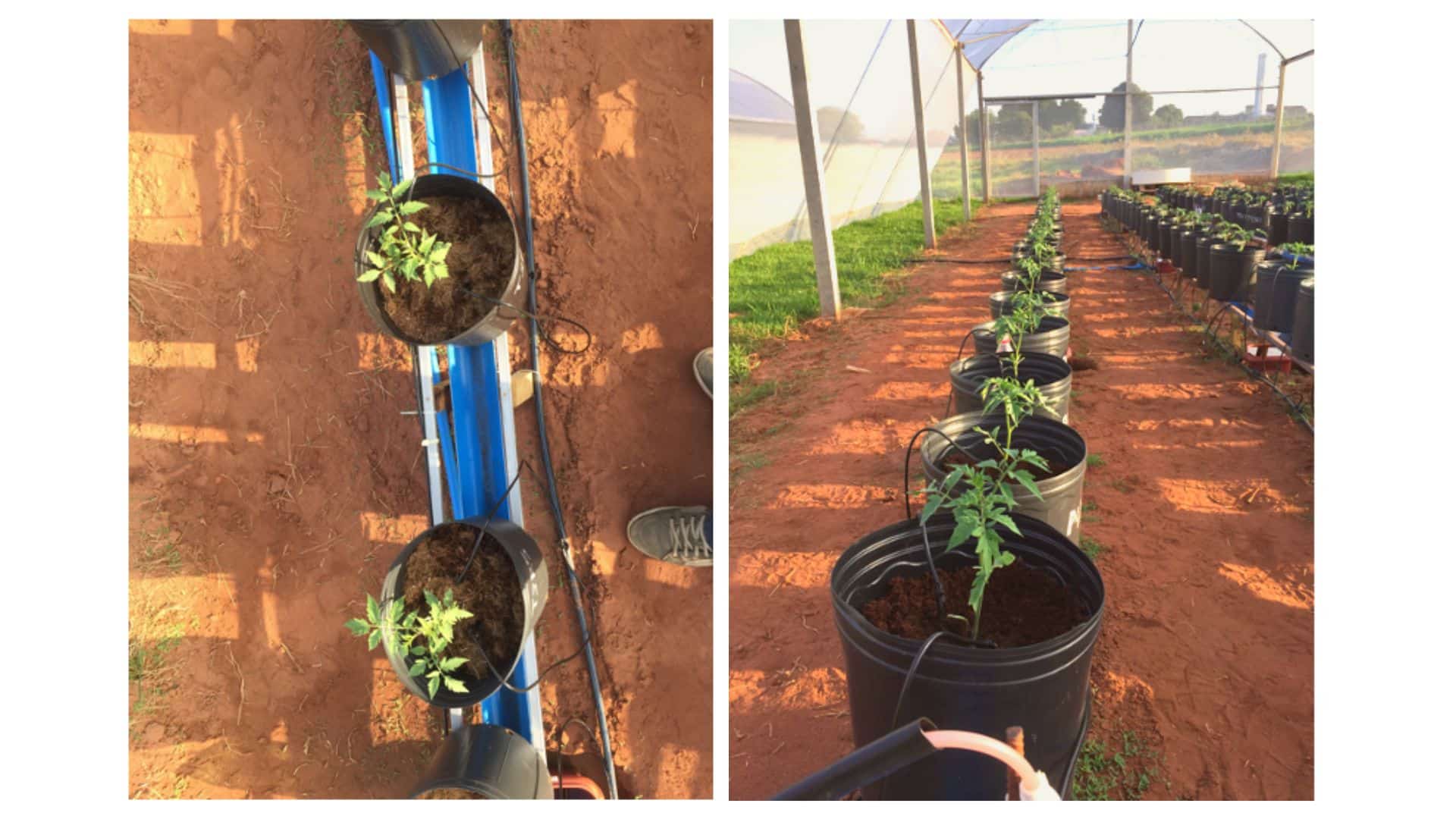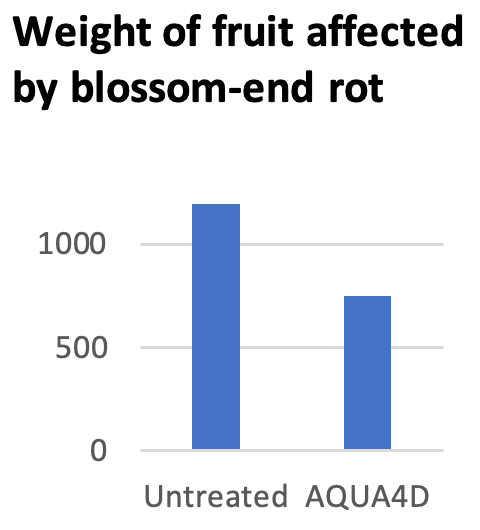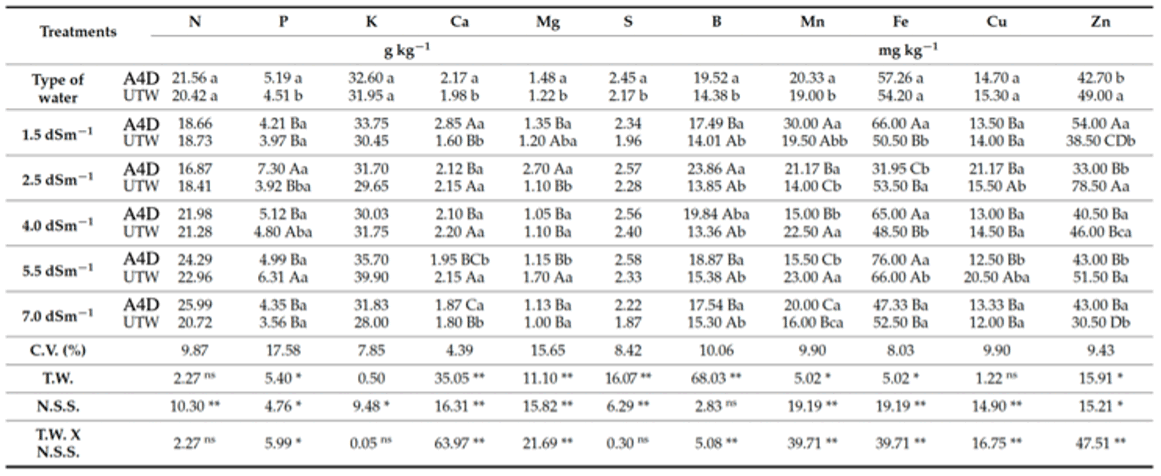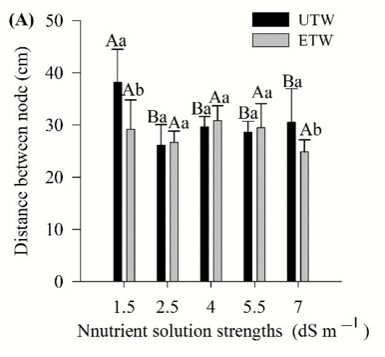Here we summarize research by FF Putti et al at UNESP (São Paulo, Brazil) and published in Plants journal (Basel) – the full publication can be accessed here.
Summary: It is recognized that poorly performed fertigation directly impacts on tomato production and biometric components. Sustainable irrigation technologies can attenuate inadequate fertigation management and improve marketable fruit yields. Researchers from UNESP (São Paulo State University, Brazil) investigated the impact of AQUA4D® treated water on physical, chemical and nutritional parameters in tomatoes. The proven benefits included significantly less blossom-end rot, and increases in Brix values and production quality. Read on to find out more.
Introduction
The tomato is characterized by a plant that is moderately sensitive to salinity. Several studies found different responses regarding the effects of the salinity of the nutrient solution on the physico-chemical characteristics of the fruits, with a maximum tolerance of 2.5 dS m-1, above which there is a reduction in productivity and nutritional imbalance. Another important factor in tomato production is apical rot (blossom-end rot), which decreases the number of commercial fruits. The team of UNESP researchers set out to monitor the effect on the tomato plants of untreated vs AQUA4D-treated water and doses of fertigation.
Method
The research was developed in the School of Sciences and Engineering, Campus de Tupã, São Paulo, Brazil in the southern hemisphere winter (June to September). Experiments were carried out in randomized blocks with five doses of fertigation (1.5; 2.5; 4.0; 5.5; and 7.0 dS m−1) and two types of water: AQUA4D® treated and untreated. Irrigation was performed using a localized system, activated every ~20 min, totaling 108 pulses and a total duration of 216 mins irrigating time. Treatments were arranged in a pot of 8 dm3 (one plant per pot), filled with coconut fiber substrate, and a total of 40 parcels.
To assess the nutritional status of the fruits, four fruits were collected per parcel, and only fruits in the maturity stage were collected. The pH was measured in the crushed pulp of the fruits using a potentiometer. The average length and the diameter of the fruit were determined in cm, with the aid of a caliper in the middle region of the fruit. Branch weights were measured in cm using scales. Total soluble solids were determined using a direct measurement employing an Optech RMT model refractometer, with results were expressed in BRIX.
Water treatment
Water was treated by AQUA4D®, which performs the physical treatment of water. Quantum physics indicates that water is an organized and structured matter, not chaotic, as one might think. Water is an element that can adapt to very different structures. Thus, when the water passes through AQUA4D® treatment, it better dissolves and distributes minerals. This causes increased water retention in the soil and better mineral absorption by plants.
Results
✅ Greater branch weight and fruit diameter | ✅ Reduced blossom-end rot
✅ Greater nutrient concentration | ✅ Internode length and water efficiency
✅ Increased fruit quality and Brix values
Result 1: Greater branch weight and fruit diameter
The biometric parameters of the tomato crop showed a significant effect depending on the strength of the nutrient solution and type of water. The nutrient solution strengths of 2.5 and 4.0 dS m-1, irrigated with AQUA4D®, presented greater branch weight. Average fruit diameter was significantly affected by nutrient solution strength and AQUA4D® treatment, with larger diameter for the combination of 2.5 dS m-1 and AQUA4D®.
Result 2: Reduced blossom-end rot
Apical rot, commonly known as blossom-end rot, causes enormous production losses and is directly related to calcium availability, fruit resistance, and water stress. In this study, more fruits had blossom-end rot when irrigated with untreated water than those irrigated by AQUA4D® with a difference of approximately 30%.
The researchers commented: “We should highlight the calcium content in the fruits in which the AQUA4D® irrigation provided the highest concentration, since Ca is a fundamental element for the non-appearance of blossom-end rot on tomatoes.”
Result 3: Greater nutrient concentration
The physico-chemical parameters of the fruit were affected by the nutrient solution strengths and the type of water. A higher concentration of nutrients was found under AQUA4D® irrigation and nutrient solutions of 4.0-5.5 dS m-1.For tomatoes irrigated with AQUA4D®, there was an increase in the concentration of phosphorus (P), calcium (Ca), magnesium (Mg), sulfur (S), boron (B) and manganese (Mn). The elements nitrogen (N), potassium (K), iron (Fe), and copper (Cu) showed no significant difference (see table below).
The researchers note: “In general, the effects of AQUA4D-treated water on nutrient solution strength stress were positive, since improvement aspects in fruit quality were verified.”
Result 4: Internode length and water efficiency
Internode length plays an important role for the improvement of plant architecture in tomato plants. In studies with tomato culture, the distance between the tomato internodes is a parameter that can indicate potential productivity, since it is directly related to yield. In this study, AQUA4D® irrigation provided the plants with less energy expenditure, and the internode distance was shorter in general. This also directly impacted the number of fruits per plant.
Thus the hypothesis that AQUA4D® causes better efficiency in water use can be confirmed. The plants had superior productive performance, spending less energy on growth and directing it to fruiting.
Result 5: Fruit quality and Brix values
The soluble solids content (Brix value) is of great economic importance in tomato processing. Even a small increase in this quality attribute can significantly increase the industrial yield. It is directly associated with yield, where each Brix increase in the raw material has, on average, a 10-20% increase in yield.
In this study, researchers observed that the treatments with a salinity of 5.5 and 7.0 dS m-1 combined with AQUA4D® irrigation showed the highest soluble solids, ratio and lowest pH values, thus promoting a better future quality.
Conclusions
The researchers observed the different fertigation techniques affected parameters including the number of fruits with blossom-end rot, fruit size, and weight. In all statistical tests, a confidence level of 95% was considered. The soluble solids content increased by 28% as a function of the fertigation doses. AQUA4D-treated water also reduced the number of fruits with blossom-end rot by 35% (p < 0.05).
Overall, AQUA4D® water improved the physicochemical quality parameters and the nutritional status of tomato fruits. Thus, this study demonstrated that this sustainable water treatment could leverage tomato fruit production and quality.
Brazil
Precision Irrigation
Scientific Study
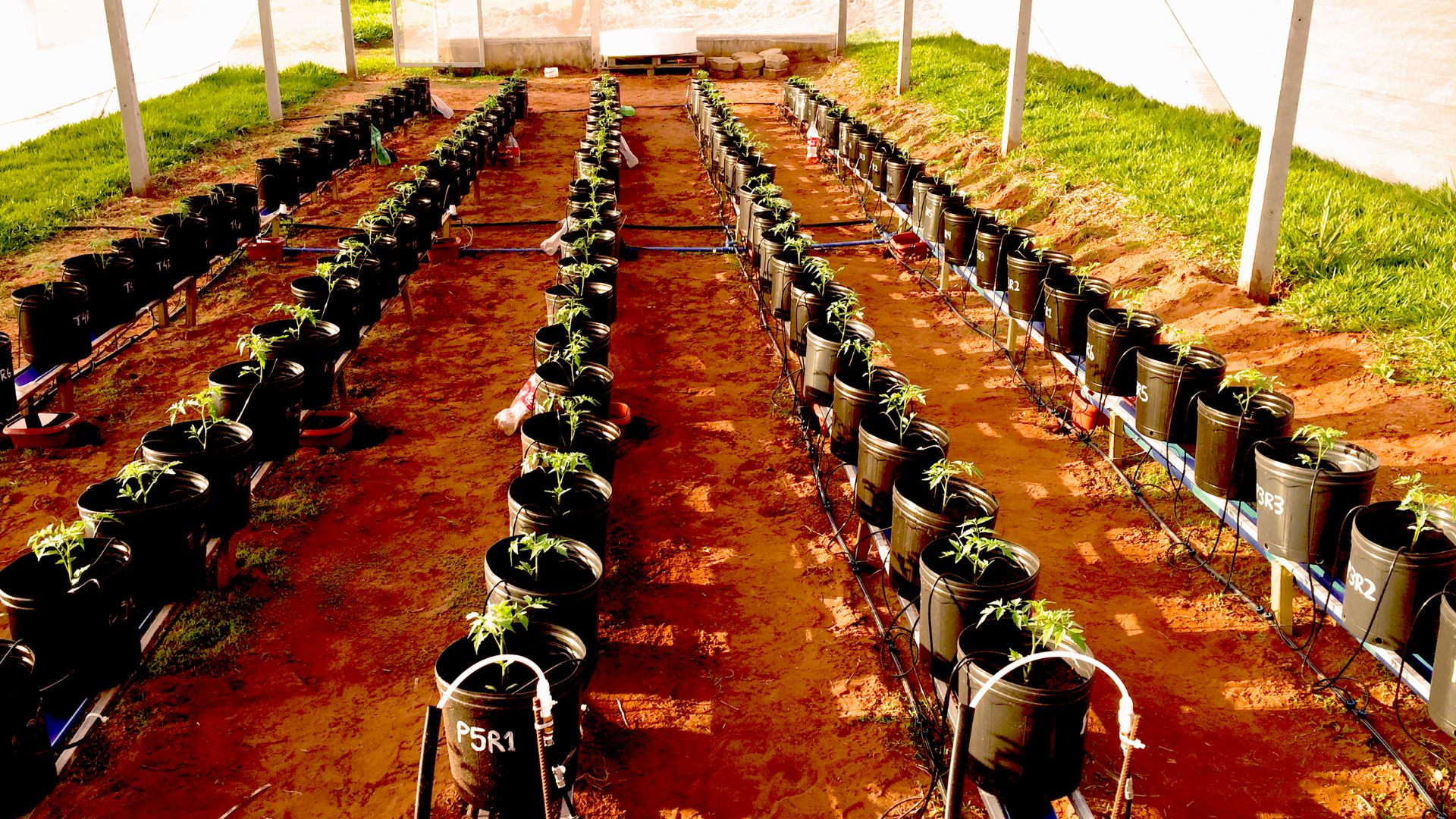
Layout of the plants in the experimental greenhouse at UNESP Câmpus de Tupã
“The hypothesis that AQUA4D® causes better efficiency in water use can be confirmed. The plants had superior productive performance, spending less energy on growth and directing it to fruiting. The study demonstrates that this sustainable water treatment could leverage tomato fruit production and quality.”
– FF Putti et al, São Paulo State University
Prof. Eusimio Fraga (UFU) explains the impact of AQUA4D® on crops (in Portuguese, with subtitles)



